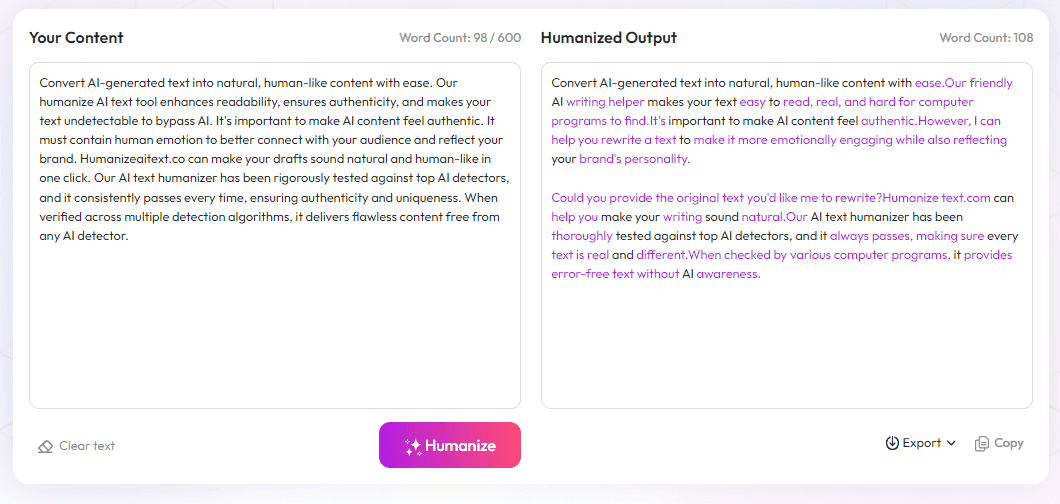Table of Contents
If you’ve ever tried to flip through a thick book and found the pages sticking or tearing, you’re not alone. Many people want a way to keep their books together without sacrificing flexibility or convenience. Stick with me, and I’ll show you why spiral binding might just be the simple, handy solution you’re looking for. Keep reading, and you'll learn about the ins and outs of spiral books, plus tips to choose the best one for your needs.
By the end, you'll see why spiral binding is a popular choice for all sorts of projects and how to pick and care for your books to keep them looking neat. Ready to find out how this binding style can make your reading and projects easier? Let’s get into it!
Key Takeaways
Key Takeaways
- Spiral binding uses a plastic or metal coil threaded through punched holes in the pages, allowing the book to lay flat and open fully. It’s great for manuals, workbooks, and projects needing frequent flipping.
- The main benefits include durability, ease of use, and the ability to customize with different coil colors and styles. It’s economical for short runs and perfect for projects requiring flexibility.
- Compared to other bindings, spiral is easier to add or remove pages, making updates simple. It’s faster and cheaper for small batches, ideal for students, teachers, and small publishers.
- There are various types of coils—plastic, metal, double-loop, and colorful—so choose based on your project’s strength, style, and budget needs.
- When selecting spiral binding, consider your project size, frequency of use, and desired appearance. Thicker coils support heavier pages, while colored or transparent coils enhance design.
- Binding your book involves punching holes, threading the coil through, and crimping the ends to secure. Proper alignment ensures pages turn smoothly.
- Costs depend on material, quantity, and customization. Larger orders typically lower the price per unit, and local or online options offer different pricing and quality choices.
- The spiral binding industry is growing, driven by demand from educational, publishing, and small business markets. Eco-friendly options are also gaining popularity.

What Are Spiral Binding Books and How Do They Work
Spiral binding books use a helical coil made of plastic or metal to hold pages together. This coil runs through small holes punched along the edge of the pages, allowing the book to open fully and lie flat on a surface. This makes it perfect for note-taking, manuals, or workbooks where convenience matters. Spiral binding is popular for educational materials because of its flexibility and durability.
The coils can be made from different materials, such as polypropylene, vinyl, or metal, each offering varying levels of strength and flexibility. Once threaded through the punched holes, the coil is crimped at the ends to prevent it from slipping out. This process is quick and efficient, making spiral binding a favorite for short runs or custom projects.
One of the key advantages of spiral binding is that it allows pages to turn 360 degrees, so users can fold the book back onto itself without damaging the spine. This feature is why spiral books are common for cookbooks, workbooks, and presentation binders.
Depending on your needs, you can choose from different types of spiral binding, such as plastic coils for a lightweight feel or metal coils for extra strength. Understanding the mechanics of spiral binding helps in selecting the right option for your project.
Key Benefits of Using Spiral Binding for Books
One of the biggest draws of spiral binding is its ability to lay flat when open, making it easier to read or write on both sides of the page. This makes spiral-bound books incredibly user-friendly, especially for manuals or workbooks.
Spiral binding is also highly durable. The coils are resistant to cracking or breaking, which is why they’re trusted in settings where books are used frequently. Plus, they can be easily turned, flipped, and cleaned without damaging the binding.
Another benefit: **cost-effective for short runs or custom projects**. Because it doesn’t require complicated machinery like perfect binding, it’s a go-to choice for creators working on limited quantities. This makes spiral binding popular among small publishers and educators.
Additionally, spiral-bound books offer flexibility in design. You can customize cover pages, colors, and even add pockets or tabs for extra functionality. This adaptability fuels its popularity for promotional materials, presentation handouts, and educational resources.
Why Choose Spiral Binding Over Other Binding Methods
Compared to perfect binding (used in paperback books) or sewn binding, spiral binding is much easier to add and modify, especially for small batches or prototypes. This flexibility makes it a favorite for on-demand printing.
Spiral binding also allows for easy page removal or addition. If you need to update a manual or workbook, doing so with spiral binding is simple—just punch new holes and slide in the coil. This is hard to do with glue-based or sewn bindings.
Another reason to pick spiral over other methods? It’s faster and less expensive for short runs. This efficiency appeals to independent authors and small publishers.
While hardcover or perfect binding might appear more professional, spiral binding excels in situations where functionality and ease of use trump sleek aesthetics. For instance, in classrooms, laboratories, or conference settings, spiral books are a practical choice.

Common Types of Spiral Binding and Their Features
There are several types of spiral binding, each with its own set of characteristics that suit different projects.
Plastic coils are the most common—they're lightweight, affordable, and come in many colors, making them ideal for educational materials and marketing giveaways.
Metal coils, on the other hand, tend to be more durable and look more professional, often used for high-end reports or portfolios.
Some coils are double-loop or twin-loop, offering a smoother page-turn and better lay-flat capability, which is perfect for manuals or cookbooks.
There are also options like colored or transparent coils, allowing for creative customization in design and branding efforts.
Understanding these options helps you choose the right binding style based on your needs, budget, and desired aesthetic.
How to Choose the Best Spiral Binding for Your Project
Picking the right spiral binding mainly depends on the project's purpose, budget, and the desired look.
If you're making a workbook that people will use frequently, opt for sturdy metal coils that won't bend easily.
For quick, cost-effective projects like flyers or promotional material, lightweight plastic coils usually do the trick.
Think about the size of your book or document—larger, heavier pages might need thicker or more robust coils to prevent snapping.
Design-wise, consider matching the coil color to your cover design or using clear options to showcase your cover art.
It’s also smart to consider how easy it will be to open, close, or refill the book later on. Some coil styles allow for easier adjustments, especially for workbooks or manuals that need frequent updates.
Steps to Properly Bind Your Book with Spiral Binding
Binding your own book with spiral binding might seem tricky at first, but following these steps can simplify the process.
First, punch holes along the edge of your pages using a compatible hole punch designed for spiral binding.
Make sure the holes align perfectly across all pages to prevent anything from misaligning.
Next, thread the coil through the punched holes—starting from one end and carefully working your way across.
If the coil is stiff, twisting it or using a coil inserter tool can make things easier.
Once the coil is through all the pages, crimp the ends to keep everything secure—most coils come with crimping tools or crimping plugs.
Finally, check that all pages turn smoothly and that the coil isn’t too tight or loose—adjust as needed.
Cost Factors to Consider When Ordering Spiral Binding
Pricing for spiral binding varies depending on the material, size, and quantity of your order.
Generally, small batches cost more per unit than larger runs because setup and machine time are consistent across orders.
Higher quality materials, like metal coils or thicker paper, add to the cost but can provide a more professional, durable result.
Color choices and customization options, such as printed covers or colored coils, can also influence price.
If you’re on a tight budget, consider bulk discounts or local print shops that offer in-house binding services.
Alternatively, online suppliers often provide quick quotes, so you can compare and choose the most economical option without sacrificing quality.
Trends and Future Outlook of Spiral Binding Industry
The sphere of spiral binding is experiencing steady growth, backed by increased demand from educational institutions, publishers, and small businesses.
As the global bookbinding materials market heads towards an estimated value of over $8.65 billion by 2025, spiral binding remains a significant segment thanks to its flexibility and cost-effectiveness.
Advancements in digital printing and digital binding machinery are making it easier to produce short runs with customization options.
Market analysts note that the increased popularity of personalized materials and niche publications sustains demand for spiral binders.
Emerging markets in developing economies could further expand the industry, providing new opportunities for both material suppliers and binding service providers.
Experts also observe a trend towards eco-friendly binding options, with manufacturers developing recyclable coils and biodegradable materials to reduce environmental impact.
FAQs
A spiral binding book uses a coil of plastic or metal that loops through holes along the book's edge. This allows pages to turn easily and lay flat when open, making it suitable for notes, manuals, or workbooks.
Spiral binding allows books to lay flat, making reading or writing easier. It's durable, affordable, and flexible for various sizes, making it ideal for note-taking, presentations, and educational materials.
Spiral binding is lightweight, cost-effective, and allows pages to fold back easily. It also offers a professional look and is quick to produce, compared to other binding methods like saddle stitch or perfect binding.
Spiral bound books are used for manuals, workbooks, notebooks, calendars, recipe books, and presentations. Their ease of use and durability make them ideal for projects requiring frequent page turning and flat lay.



